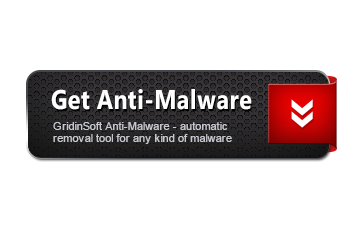The Trojan.Win32.SelfDel.hqae is considered dangerous by lots of security experts. When this infection is active, you may notice unwanted processes in Task Manager list. In this case, it is adviced to scan your computer with GridinSoft Anti-Malware.

Gridinsoft Anti-Malware
Removing PC viruses manually may take hours and may damage your PC in the process. We recommend using GridinSoft Anti-Malware for virus removal. Allows to complete scan and cure your PC during the trial period.
What Trojan.Win32.SelfDel.hqae virus can do?
- Executable code extraction
- Injection (inter-process)
- Injection with CreateRemoteThread in a remote process
- Attempts to connect to a dead IP:Port (2 unique times)
- Presents an Authenticode digital signature
- Creates RWX memory
- A process attempted to delay the analysis task.
- Loads a driver
- Reads data out of its own binary image
- Drops a binary and executes it
- HTTP traffic contains suspicious features which may be indicative of malware related traffic
- Performs some HTTP requests
- Unconventionial binary language: Arabic (Algeria)
- Unconventionial language used in binary resources: Spanish (Modern)
- Uses Windows utilities for basic functionality
- Deletes its original binary from disk
- Attempts to repeatedly call a single API many times in order to delay analysis time
- Creates or sets a registry key to a long series of bytes, possibly to store a binary or malware config
- Steals private information from local Internet browsers
- Installs itself for autorun at Windows startup
- Attempts to modify proxy settings
- Creates a copy of itself
- Attempts to create or modify system certificates
- Collects information to fingerprint the system
- Anomalous binary characteristics
- Uses suspicious command line tools or Windows utilities
Related domains:
z.whorecord.xyz |
7819552a3888d197.xyz |
a.tomx.xyz |
How to determine Trojan.Win32.SelfDel.hqae?
File Info:
crc32: 008B125Dmd5: b38c844ebfa5ee5107875ee554d00d13name: y7.exesha1: baa72a64826fd9565b040abd955f60c5fe251bc1sha256: c3ffbbb3801ad7ee75785c7da20d8c9385f78bd7646b4e2f2c228eaa3a5124a3sha512: 20fcff0f8498bc14fb4ede556cec4359efd5bc813acae78f1db0f495af0c9c8bfc5b63638b90f431cf7b8a62e5baf5936ae64233cc083a56372943caf3a4eeeessdeep: 49152:5IDf3qN11xKhM7zlLlaWgLfHlkB5pRRVscwNWyY+SmhqntHT5IEByC:GrqRxKhqzhlaWuHlW9RmcwzAVp5IeTtype: PE32 executable (GUI) Intel 80386, for MS WindowsVersion Info:
LegalCopyright: xa9 Microsoft Corporation. All rights reserved.InternalName: DPInstFileVersion: 2.1CompanyName: Microsoft CorporationProductName: Driver Package Installer (DPInst)ProductVersion: 2.1FileDescription: x200ex200eDriver Package InstallerOriginalFilename: DPInst.exeTranslation: 0x0401 0x04b0
Trojan.Win32.SelfDel.hqae also known as:
| Qihoo-360 | Generic/HEUR/QVM19.1.C23B.Malware.Gen |
| AegisLab | Trojan.Multi.Generic.4!c |
| CrowdStrike | win/malicious_confidence_100% (W) |
| Kaspersky | Trojan.Win32.SelfDel.hqae |
| Alibaba | Trojan:Win32/SelfDel.e313fa42 |
| F-Secure | Trojan.TR/Crypt.XPACK.Gen8 |
| VIPRE | Trojan.Win32.Generic!BT |
| SentinelOne | DFI – Suspicious PE |
| Sophos | Mal/Generic-S |
| Avira | TR/Crypt.XPACK.Gen8 |
| Microsoft | Trojan:Win32/Wacatac.C!ml |
| ZoneAlarm | Trojan.Win32.SelfDel.hqae |
| Cynet | Malicious (score: 85) |
| McAfee | Artemis!B38C844EBFA5 |
| Fortinet | W32/Malicious_Behavior.VEX |
| Ikarus | Trojan.Crypt |
| GData | Win32.Trojan.Kryptik.9QM8DZ |
| AVG | FileRepMalware |
How to remove Trojan.Win32.SelfDel.hqae?
- Download and install GridinSoft Anti-Malware.
- Open GridinSoft Anti-Malware and perform a “Standard scan“.
- “Move to quarantine” all items.
- Open “Tools” tab – Press “Reset Browser Settings“.
- Select proper browser and options – Click “Reset”.
- Restart your computer.



Leave a Comment